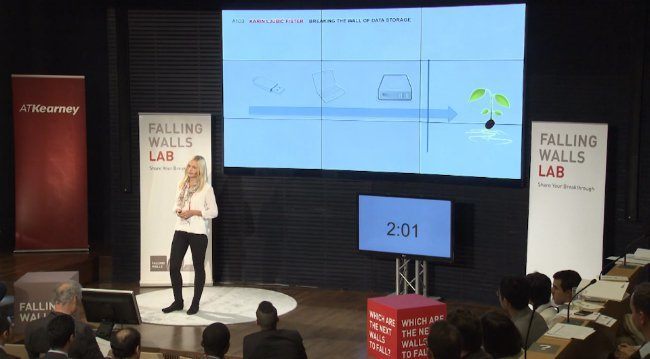Storing Data in a Living Plant
Long before human beings invented computers, nature found a way to store incredible amounts of data in a tiny package: DNA. Now, scientists are figuring out how to do the same trick — creating artificial gene sequences that use the four base pairs (A, C, G and T) to represent binary bits of information. And a group of researchers in Slovenia have demonstrated how these code-laden genes can be inserted into bacteria, transferred into plants, and passed on to subsequent generations.
11/01/2019
Karin Ljubic Fister and her husband worked with faculty at the University of Ljubljana to create the pilot project, which encoded a short snippet of computer code into the DNA of tobacco plants. When the plants were cloned from cuttings and the DNA re-sequenced, converted back to binary, and executed as a Python script, the program ran flawlessly — printing “Hello World” on a computer screen.

Because DNA is so small compared to silicon-based storage media, Fister claims, a handful of seeds could hold all of humanity’s current digital archives. But even more exciting is the prospect of growing living libraries, where a garden, arboretum or forest is made of up plants that hold vast stores of information. A visitor might pick a leaf or a flower, pop it in a hand-held DNA reader, and be able to read a classic book, browse Wikipedia, or listen to music.
On the other hand, the prospect of inserting digital content into living creatures is fraught with moral and practical implications, as is any genetic modification technology. One primary concern is how individual organisms and the environment might be affected by these extra genes. In a blog post, Fister wrote that the experiment did not affect the plants’ “vigour and fertility”...but that’s a long way from saying that the process is harmless, much less that it’s a good idea to cover the landscape with plants that have been “infected” with the digital archives of human civilization.
A more practical concern is that natural mutations would gradually corrupt the data as it was passed down through the generations. That’s a tough nut to crack — but seeds, at least, could be frozen to preserve their info-infused DNA for centuries or millennia.
Fister described the research in a presentation at Falling Walls Lab Berlin in 2015. Check it out in the video below.